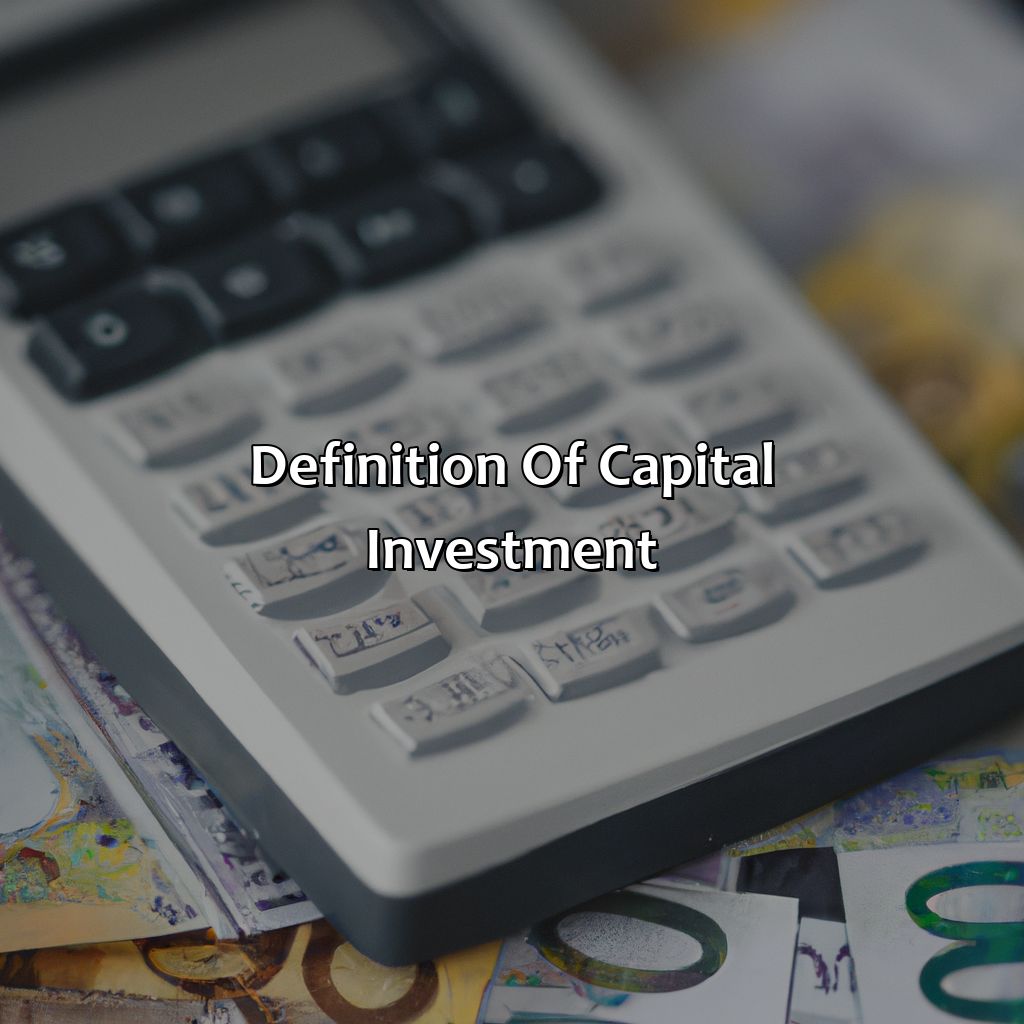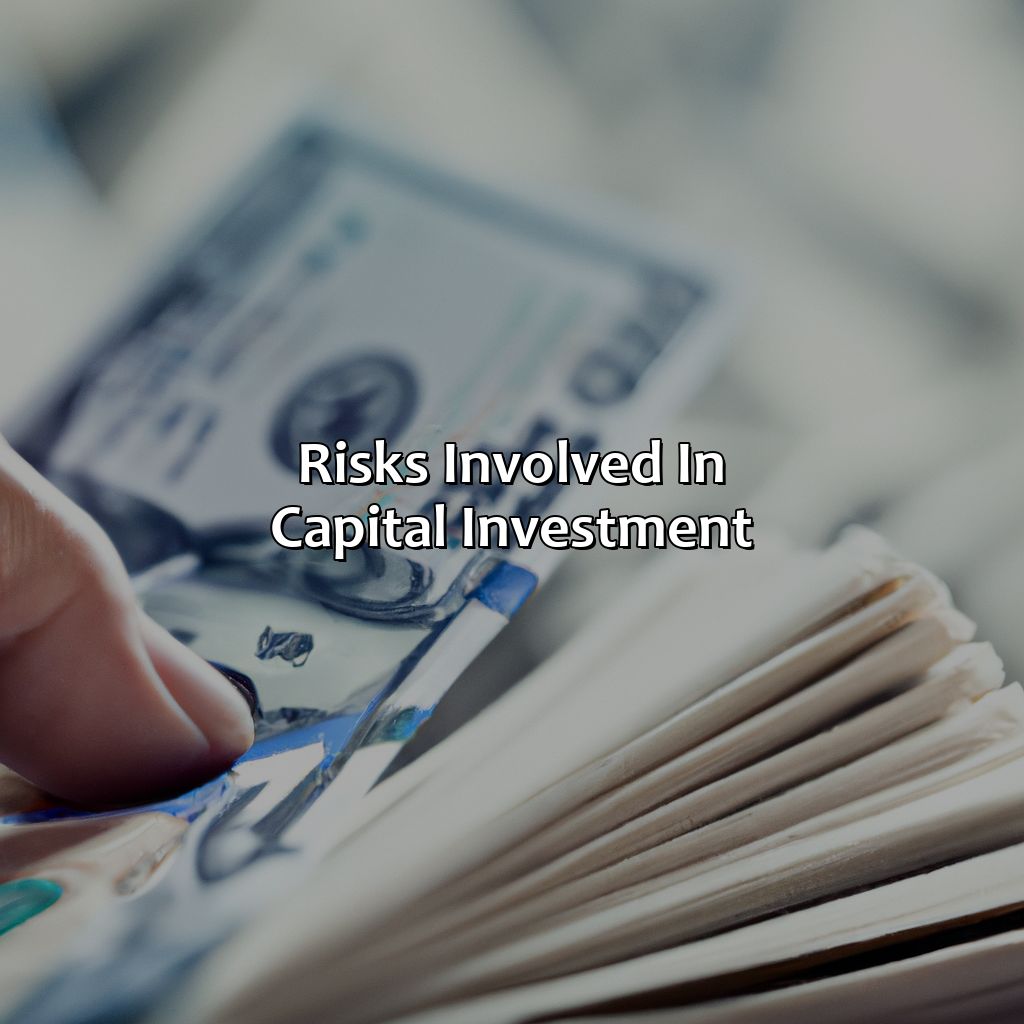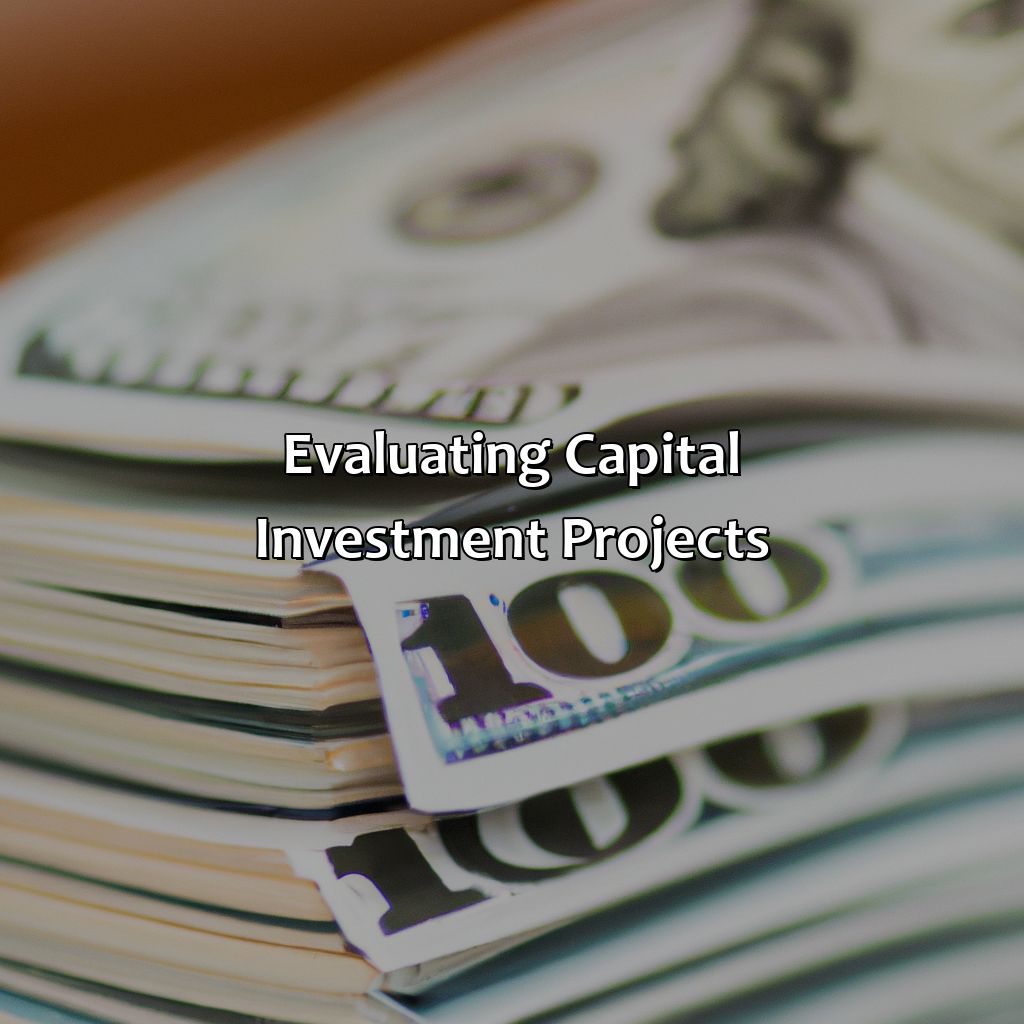What Is Capital Investment?
Key Takeaway:
- Capital investment is the allocation of financial resources or resources in the form of intellectual, human, or physical capital, to undertake projects that will yield long-term benefits to the business.
- There are different types of capital investments, including financial, human, physical, and intellectual. Each type of investment has specific characteristics and can yield different benefits to the business.
- When making decisions about capital investment, businesses need to consider various factors, such as the availability of resources, the expected return on investment, and the level of risk involved. Proper evaluation of investment projects is critical to mitigating risks and maximizing returns on investment.
Struggling to understand Capital Investment? You’re not alone! This article explains the concept of capital investment and provides tips on how to make the most of it. Uncover the financial opportunities hidden in this essential investment choice and make the right investment decisions for your future.
Definition of Capital Investment
Capital investment refers to the deployment of funds to purchase, maintain, or upgrade long-term assets that are expected to generate income or appreciate in value over time. This type of investment is typically made by businesses or individuals with the intention of increasing their capacity to produce goods and services, expand their operations, or enhance their competitive advantage.
Capital investments can take various forms, including the acquisition of land, buildings, machinery, equipment, and technological systems. These investments require a significant amount of capital and are usually made with the expectation of generating higher returns than short-term investments. Furthermore, capital investments can have a long-term impact on the financial performance and sustainability of a business.
For instance, a manufacturing company might invest in new machinery to increase its production capacity and improve its efficiency. In the long run, this investment could result in higher revenues and profits for the company. Similarly, an individual might invest in a rental property, with the expectation of earning rental income and benefiting from the appreciation of the property value over time.

Image credits: retiregenz.com by Yuval Jones
Types of Capital Investment
Grasp the different capital investments: financial, physical, and intellectual. Discover how each can help your business. Determine which is the optimal choice for your objectives. Delve into this section to find out!

Image credits: retiregenz.com by Adam Woodhock
Financial Capital Investment
Investing money in business is known as financial capital investment. It involves purchasing assets that are expected to generate a return on investment. These investments can include stocks, bonds, mutual funds, and real estate. Financial capital investment is a long-term strategy for growing wealth, where investors may be seeking to obtain capital gains or create passive income streams.
One key benefit of financial capital investment is the potential for diversified investment portfolios. Investors can spread their risk by investing in multiple asset classes – such as stocks, bonds, and real estate – reducing their exposure to individual asset volatility.
Additionally, financial capital investments typically require less hands-on involvement than other types of investments. For example, investing in rental properties requires managing tenants and property maintenance. In contrast, mutual funds and stocks are managed by professional portfolio managers who handle the day-to-day decision making.
It’s important to note that as with any type of investment, there are risks associated with financial capital investments. No investment is guaranteed to provide positive returns or guarantee against losses. It’s important for investors to research and understand the various options available before making any investment decisions.
A successful businessman once invested a substantial amount of financial capital into a promising tech start-up venture. Despite initial success, the company ultimately failed due to poor management decisions and economic instability. The businessman learned from this experience and diversified his investments moving forward.
Investing in your employees’ skills is like planting a money tree – except it actually works.
Physical Capital Investment
One category of investment is the allocation of resources towards assets, including plant and machinery, that can generate production. These investments are referred to as Physical Asset Investments. These may include purchasing or upgrading equipment utilized in production facilities.
Physical Asset Investment might involve diverting resources towards a facility expansion or a new plant being established. These types of projects a business may engage in are expected to stimulate capability, performance, and asset management procedures by supplying further or renewed capital expenditure. Physical Capital Expenditure can enhance effectiveness while creating an environment where the business models and capabilities can grow.
It is essential to evaluate the benefits of undertaking a Physical Capital Investment project. The analysis should factor in anticipated return on investment, project timeline, commitment of resources required to administer the establishment phase thoroughly, and other factors unique to each individual organization.
To optimize your outcome from your Physical Capital Investment strategy, it is critical that aspects like effective resource allocation and due diligence are reflected upon regularly to boost operational capacity and infrastructure growth. Additionally, procure regular maintenance schedules on these newly-acquired technologies requires prioritizing its upkeep within available budgets.
Putting your brain to work can yield a high return on investment, but be prepared for the occasional mental breakdown.
Intellectual Capital Investment
Investment into intangible assets such as creativity, human capital, and knowledge management is known as Intellectual Investment. It encompasses the enhancement of employees’ professional skills, organizational culture, streamlined business processes, and innovative ideas promoting long-term growth. Intellectual investment infuses existing capacities with something entirely new resulting in an increase in business value. Intellectual investments are not just critical for business growth but also for accelerating competitive advantage and becoming industry leaders.
Intellectual capital investment contributes significantly to a firm’s performance and sustainability. Building an effective knowledge system to leverage intellectual resources is vital to facilitate innovation aimed at keeping up with market trends. Although it may be challenging to quantify value, its benefits are far-reaching—fostering knowledge exchange among employees encouraging strategic thinking and learning.
Businesses investing in intellectual capital can enjoy increased efficiency translating into better decision-making which helps drive their long-term strategy. By enabling information sharing across different departments of an organization, businesses can improve their problem-solving capability while driving the evolution of service offerings.
Pro-Tip: Every organization must take stock of its available intellectual capital before investing in it effectively. A SWOT analysis is one approach that can be harnessed by businesses to identify strengths weaknesses opportunities – threats related to their strategic goals before investment takes place.
Capital investment is like planting a tree, it may take time and effort but in the end, you’ll reap the benefits of its growth.
Importance of Capital Investment
With the ever-changing market and fierce competition, it’s crucial to understand the significance of investing in capital assets. Capital investment plays an integral role in ensuring a company’s growth and success. By allocating funds towards new equipment, technology and infrastructure, businesses can increase productivity, improve efficiency and maximize profits. Investing in capital projects also allows for long-term growth and sustainability, as it provides companies with competitive advantages and helps to secure their position in the market.
Investing in capital assets can also enhance a company’s reputation amongst stakeholders, as it shows a commitment to progress and innovation. It gives businesses the opportunity to differentiate themselves from their competitors and helps to attract potential investors. By continuously investing in capital projects, companies can stay ahead of the curve and adapt to changing market trends.
It’s essential to note that capital investment requires careful planning, analysis and evaluation of potential risks and returns. By conducting thorough research and working with experienced professionals, businesses can make informed decisions and optimize the outcomes of their investments. Continuous monitoring and adjustment of investment strategies are also necessary to ensure long-term success.
In today’s rapidly evolving business landscape, failing to invest in capital assets can result in missed opportunities and loss of market share. Companies who neglect to invest in their future risk being left behind and struggle to remain competitive. Don’t wait until it’s too late, start investing in capital projects today and secure your company’s future in the market.

Image credits: retiregenz.com by Joel Arnold
Factors affecting Capital Investment Decisions
Capital spending decisions are influenced by various factors which can impact long-term business profitability.
Factors Affecting Capital Investment Decisions
| Economic Environment | Regulatory Environment |
|---|---|
| Financial Capability | Payback Period |
| Market Demand | Potential Return |
| Technology | Business Strategy |
A company’s financial ability to carry out capital investments is one of the key factors influencing such decisions. The regulatory environment also plays a crucial role in determining a company’s options for investing.
Capital investment decisions have been influenced by various historical events such as the global financial crisis in 2008, which saw many firms reduce their capital expenditures due to financial constraints and risk aversion.

Image credits: retiregenz.com by Adam Washington
Risks involved in Capital Investment
Capital Investment – Mitigating Risks
Investing in capital assets comes with inherent risks. While the potential for profits is high, so too are the risks associated with capital investments. As such, it is crucial to mitigate these risks to ensure success.
One way of managing risk in capital investments is by diversifying investments into various asset classes. This can ensure that any potential losses in one class do not affect the overall portfolio significantly. Another way is to invest in companies with strong financial statements, including balance sheets, earnings, and cash flows.
It is also essential to stay informed about market and economic conditions that could impact the investment. This will allow investors to make informed decisions about their portfolio, reducing the likelihood of suffering significant losses.
In the past, several companies have collapsed due to poor capital investment choices. For instance, in 2002, WorldCom declared bankruptcy due to accounting irregularities. This serves as an essential lesson and highlights the importance of thoroughly vetting any potential investments before committing capital resources.

Image credits: retiregenz.com by Harry Woodhock
Evaluating Capital Investment Projects
Capital investment projects are an essential component of any business growth strategy. To assess the various investment options available, a comprehensive evaluation process is crucial. This involves projecting future cash flows, calculating the expected returns, and measuring the financial risks associated with each project.
| Criteria | Description |
|---|---|
| Investment | Cost of the project |
| Cash Flows | Projected inflows and outflows of cash over the life of the project |
| Payback period | The time required for the project to recoup its initial investment through cash flows |
| Net Present Value (NPV) | The difference between the present value of future cash inflows and the present value of cash outflows |
| Internal Rate of Return (IRR) | The expected rate of return on the investment |
It is imperative to note that evaluating capital investment projects necessitates a thorough understanding of the business and its long-term plans. An informed decision can only be made if the project aligns with the company’s objectives and strategy.
Considering the significant financial commitment involved in capital investments, it is crucial to consider the impact that alternative projects may have on business operations. Moreover, seeking professional advice and conducting due diligence can aid in identifying and mitigating potential risks.
Finally, while the calculated NPV and IRR are essential indicators of financial feasibility, it is crucial to examine other non-monetary factors that may have an impact on the project’s success, such as regulatory requirements, environmental concerns, and social responsibilities.

Image credits: retiregenz.com by Yuval Woodhock
Some Facts About Capital Investment:
Capital investment refers to the deployment of funds to acquire or upgrade assets such as buildings, machinery, or technology for the purpose of generating income or profit over the long term. (Source: The Balance)
Capital investment involves a significant upfront cost but can lead to increased productivity, efficiency, and competitiveness in the long run. (Source: Harvard Business Review)
Capital investment decisions are usually based on factors such as return on investment (ROI), payback period, and net present value (NPV). (Source: Investopedia)
Businesses can finance capital investments through various sources such as equity, debt, or retained earnings. (Source: Entrepreneur)
Capital investment is a key driver of economic growth and job creation, as it stimulates innovation, productivity, and competitiveness in businesses and industries. (Source: World Bank)
FAQs about What Is Capital Investment?
What is capital investment?
Capital investment refers to the process of investing money in a business with the expectation of generating income or profit through the production of goods or services. This type of investment is typically made for the long term and is used to purchase assets such as equipment, property, and technology.
What are the types of capital investment?
The two main types of capital investments are fixed and working capital. Fixed capital investments involve purchasing long-term assets such as land, buildings, equipment and machinery, while working capital investments involve funding day-to-day operations such as payroll, materials, and inventory.
What are the advantages of capital investment?
Capital investment offers several advantages including the potential for increased profits, improved efficiency and productivity, greater market competitiveness, and the ability to expand or diversify a business.
What are the sources of capital investment?
Sources of capital investment include personal savings, loans from banks or financial institutions, equity financing, and government grants or subsidies. Businesses may also seek capital investment from venture capitalists or private equity firms.
What factors should be considered before making a capital investment?
Before making a capital investment, businesses should consider factors such as return on investment, cash flow projections, market demand, competition, regulatory requirements, and the potential for technological change or disruption.
What are some examples of capital investments?
Examples of capital investments include building or purchasing a new facility, upgrading technology or equipment, expanding a product line, acquiring another business, or investing in research and development.
 Checkout this IRS Loophole
Checkout this IRS Loophole 
